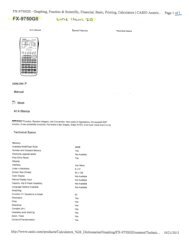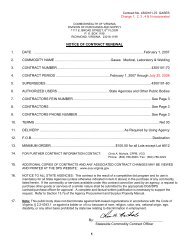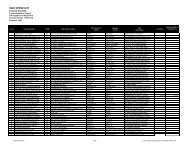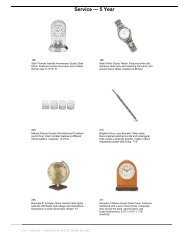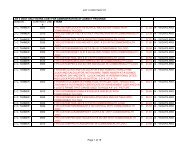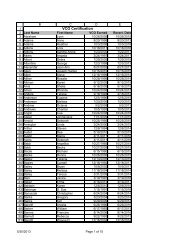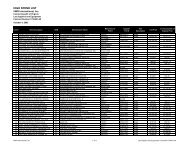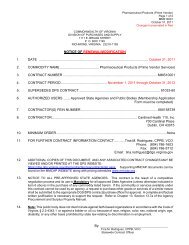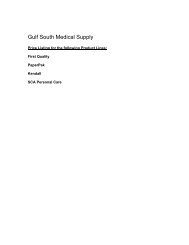attachment 2 section i ? technical specifications commuter coach ...
attachment 2 section i ? technical specifications commuter coach ...
attachment 2 section i ? technical specifications commuter coach ...
Create successful ePaper yourself
Turn your PDF publications into a flip-book with our unique Google optimized e-Paper software.
3.3 SUSPENSION<br />
3.3.1 GENERAL REQUIREMENTS<br />
Page 43<br />
ATTACHMENT 2<br />
The front and rear axle suspension shall be pneumatic and equipped with straight side lobe air<br />
suspension bellows. Four suspension bellows shall be provided on the rear axles and two suspension<br />
bellows on the front axle. Each trailing axle swing arm shall be equipped with a straight side lobe type<br />
air spring, 9.5”for the 45’. Pressure in the trailing axle suspension shall be automatically adjusted as<br />
required by the load-sharing system. Manual air dump valves shall also be provided in the engine<br />
compartment.<br />
The basic suspension system exclusive of bellows, height control valves, bushings and shock absorbers,<br />
shall last the life of the <strong>coach</strong> without major overhaul or replacement. Four (4) heavy-duty rubber<br />
bushed silent block sleeve type radius rods shall be provided at both the front and rear drive axles to<br />
control lateral, longitudinal, and torsional movement. Radius rod bushings shall be Clevite part #<br />
836520l. One transverse stabilizing rod shall be provided on front axle for additional support during<br />
<strong>coach</strong> lane changing or turning of corners. The rear suspension system shall be equipped with a sway<br />
bar designed to reduce body lean and increase bushing life. Castle nuts shall be installed on sway bars.<br />
Items such as bushings and air springs shall be easily and quickly replaceable. Adjustment points shall<br />
be minimized and shall not be subject to a loss of adjustment in service. Necessary adjustments shall be<br />
easily accomplished without removing or disconnecting the components.<br />
3.3.2 SPRINGS AND SHOCK ABSORBERS<br />
3.3.3 TRAVEL<br />
The suspension system shall permit a minimum wheel travel of 3.5 inches in jounce and 3 inches in<br />
rebound. Elastomeric bumpers shall be provided at the limit of jounce travel. Rebound travel may be<br />
limited by elastomeric bumpers or hydraulically within the shock absorbers.<br />
3.3.4 KNEELING<br />
A driver-actuated kneeling device shall lower the <strong>coach</strong> floor 3" to 6" during loading or unloading<br />
operations regardless of load to a floor height of 42 inches measured at the longitudinal centerline of the<br />
front door. The park brake shall prevent movement when the <strong>coach</strong> is kneeled. The <strong>coach</strong> shall kneel<br />
and rise at a maximum rate of 1.5 inches per second at essentially a constant rate. After kneeling, the<br />
<strong>coach</strong> shall rise within 2 seconds to a height permitting the <strong>coach</strong> to resume service and shall rise to the<br />
correct operating height within 9 seconds. During the lowering and rising operation, the maximum<br />
acceleration shall not exceed 0.2g and the jerk shall not exceed 0.3g/second measured on the front door<br />
step tread. A flashing indicator visible to the driver shall be illuminated until the <strong>coach</strong> is raised to a<br />
height adequate for safe street travel. An audible warning device that operates with the kneeling system<br />
shall be provided. A visual indicator meeting ADA requirements shall be provided on the curbside of<br />
the <strong>coach</strong>, visible to the boarding passenger who activates during the kneeling operation. This indicator<br />
shall be appropriately marked.



